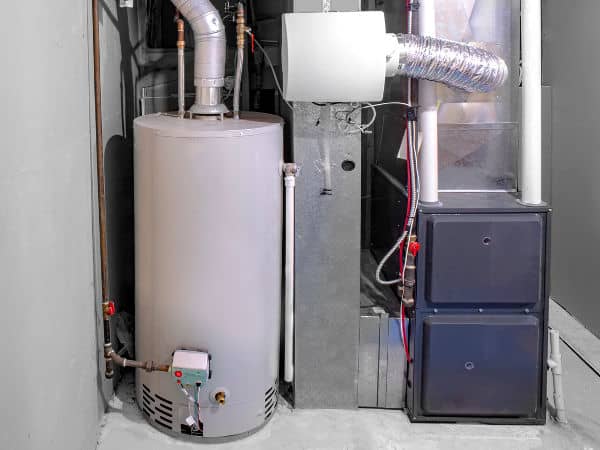The content on the next paragraphs about How to Maintain Your Water Heater & Prolong its Life is indeed fascinating. Don't skip it.

Hot water is essential for day-to-day comfort, whether it's for a rejuvenating shower or cleaning dishes. To guarantee your warm water system runs successfully and lasts much longer, regular maintenance is key. This write-up offers practical suggestions and understandings on how to keep your home's warm water system to prevent disturbances and expensive repair work.
Intro
Preserving your home's hot water system could seem challenging, yet with a couple of easy actions, you can guarantee it runs efficiently for years ahead. This guide covers every little thing from comprehending your warm water system to DIY upkeep tips and recognizing when to contact professional assistance.
Significance of Keeping Your Hot Water System
Normal upkeep not just extends the life-span of your hot water system yet likewise guarantees it operates successfully. Overlooking upkeep can result in lowered performance, higher energy expenses, and also premature failure of the system.
Indications Your Hot Water System Demands Upkeep
Knowing when your hot water system requires focus can prevent major issues. Watch out for signs such as irregular water temperature, odd sounds from the heating unit, or corroded water.
Understanding Your Warm Water System
Before diving right into maintenance tasks, it's handy to understand the fundamental parts of your hot water system. Typically, this includes the hot water heater itself, pipelines, anode rods, and temperature level controls.
Month-to-month Maintenance Tasks
Routine regular monthly checks can aid catch minor problems prior to they escalate.
Flushing the Hot Water Heater
Purging your water heater removes sediment buildup, improving effectiveness and extending its life.
Checking and Changing Anode Rods
Anode poles protect against deterioration inside the container. Evaluating and changing them when broken is crucial.
Inspecting and Adjusting Temperature Settings
Adjusting the temperature setups ensures optimal performance and security.
Do It Yourself Tips for Maintenance
You can do numerous upkeep jobs on your own to keep your hot water system in top condition.
Checking for Leakages
Routinely examine pipelines and links for leakages, as these can cause water damage and greater expenses.
Evaluating Pressure Relief Valves
Evaluating the pressure relief valve guarantees it operates appropriately and stops too much stress buildup.
Insulating Pipelines
Shielding warm water pipes reduces warmth loss and can save energy.
When to Call a Specialist
While do it yourself maintenance is useful, some issues require specialist experience.
Facility Issues Calling For Expert Help
Instances consist of major leakages, electric problems, or if your hot water heater is regularly underperforming.
Regular Specialist Maintenance Benefits
Specialist maintenance can consist of comprehensive examinations, tune-ups, and guaranteeing compliance with safety and security requirements.
Conclusion
Routine maintenance of your home's warm water system is vital for efficiency, longevity, and price savings. By following these ideas and knowing when to look for professional assistance, you can make certain a trustworthy supply of hot water without unanticipated disruptions.
Water Heater Maintenance Tips
Test the TPR Valve
Shut off the power and the cold-water supply valve. Place a bucket under the pipe connected to the temperature-pressure-release (TPR) valve on the top or side of the tank. (This valve opens if the tank pressure gets too high.) Lift the valve’s tab to let some water out, then let go. If water keeps flowing, drain the tank partway, unscrew the old valve with a pipe wrench, and install a new one. Check the Anode Rod
Put a hose to the tank’s drain cock and let out a few gallons of water. Now fit a 1 1/16-inch socket onto the rod’s hex head on top of the heater (or under its top plate) and unscrew the rod. If it’s less than ½ inch thick or coated with calcium, buy a new one, wrap its threads with Teflon tape, put it back in the tank, and tighten securely. Use this segmented rod if headroom above the tank is limited. Drain the Tank and Wash Out Sediment
Drain the remaining water in the tank into the bucket, then stir up the sediment on the tank’s bottom by briefly opening the cold-water supply valve. Drain and repeat until clean water comes out of the hose. Close the drain cock, refill the tank, and turn its power back on. Adjust the Temperature
Find the temperature dial on the side of the tank and unscrew its cover. Adjust the dial to 120 degrees using a flathead screwdriver. For every 10 degrees the temperature is lowered, you can expect to save up to 5 percent in energy costs. Turn the water heater off or the thermostat down to its lowest setting if you plan to be away from home for more than three days. Insulate the Pipes
Buy some self-sticking 3/8-inch-thick foam pipe insulation that matches the pipes’ diameter. Slide the foam over the hot-and cold-water pipes as far as you can reach. Insulating the cold-water pipe prevents condensation in summer. Peel the tape and squeeze the insulation closed. If the pipe is 6 inches or less from the flue, cover it with 1-inch-thick unfaced fiberglass pipe wrap. https://www.thisoldhouse.com/plumbing/21016402/how-to-maintain-a-water-heater

We were shown that report on Water Heater Maintenance Tips You Can't Afford to Forget through someone on another site. Make sure you take the time to promote this entry if you enjoyed reading it. I take joy in reading our article about How to Maintain Your Water Heater & Prolong its Life.
Click Here